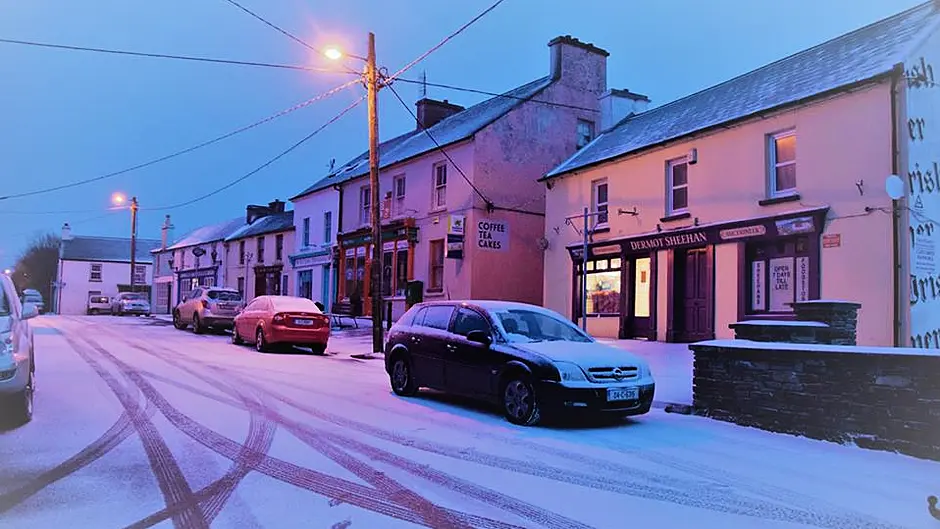Picking ivy from the old Famine houses, walking three miles to mass, and the excitement of the parcels from America are all memories held dear at this time of year, Goleen woman Kathleen Downey tells MARY McCARTHY
DURING the 1950s, sometimes on Christmas Eve, the sea mist rolled in over the Mizen.
But it was Santa who brought the real excitement, according to Kathleen Downey, who grew up three miles from Goleen.
‘Christmas was not mentioned in our house until after the 8th of December,’ she said. ‘And I remember a week before Christmas, climbing walls of the ruins of the old Famine houses in search of ivy. We used it to decorate pictures and the shelves. And streamers were tacked to the ceiling.’
On the 8th of December, and the Sunday after, a big parish concert was held in the hall on two nights, Kathleen remembered. This was to raise funds for coal for the school.
Local singers of any age from Goleen school sang in groups of two or three. There was also a three-act play.
At the time, there were a lot more local people in the locality. A queue the length of North Street went to see it.
Everything was family orientated, neighbours interacted and generations mixed. The festive season was home time, when farmers did no heavy work. They fed the pigs and hens and milked the cows, but there was no sowing of crops that week.
What brought in the Christmas was getting a good price for turkeys. A buyer would come to the crossroads to meet the farmer and could buy up to twenty.
‘On Christmas Eve, the youngest in the house lit the candle,’ she said. ‘This was a present from the grocery. I recall a hole was carved in a turnip and either a red or white candle inserted. And it would be left lighting all night. Small candles were placed in every window.’
‘It was dark outside by 6pm,’ she said. ‘That was the time for the coming of Santa. We got books like Jack in The Beanstalk. Presents were found in the stockings by the fireplace. Afterwards, two elderly neighbours would call scíorting. It was a social with tea and cake. They called to see what we had got. Toys like a car or doll, an orange or a bar of chocolate, as well as crayons or a fountain pen. Everybody was in bed by 10pm to be up for mass at 7am,’ she recalled.
‘We walked the three miles to mass. Light was in every house along the way. Christmas dinner was not important. I can’t remember it. But I do have memories of neighbours calling on Christmas night for tea, a chat and singing old ballads like Homes of Donegal. And news of local happenings was shared.’
‘On St Stephen’s night, the Wren Ball was a big night out,’ she said. ‘This was a dance at the parish hall with a band from 9pm until 2am. There was dancing, singing and music. It was time to see those working in England, home for Christmas. There was a mineral bar in the hall, and only a mineral bar for everyone from 16 years to 60 years old. I enjoyed dancing all night. Waltzes, quick step, fox trot and a half set. This was big in rural areas. As was the new dress for the occasion. A lot of these came from America.’
‘Emigration was high at the time,’ Kathleen said.
‘The American relatives sent a parcel or two at Christmas. They saw want, they sent home to help and were very good to home. The excitement was great when the postman brought them on the carrier of his bicycle. Usually, there would be bits for Christmas, but my mother robbed the parcel before we would see it. They would always send a letter about their family in a Christmas card.’
‘A parcel weighed about a stone,’ she said. ‘It came in a cotton flour bag that was sewn, so there was no danger of it bursting in transit. It consisted mostly of clothes: dresses, jumpers, shoes, scarves, and coats. These were for anyone in the family they would fit and no one in particular. However, it was always great to get tea, because tea was scarce at the time.’
‘Christmas brought tradition, family life and communicating with people,’ Kathleen noted. ‘It was a time of celebration and we looked forward to it.’







